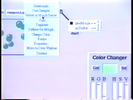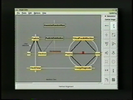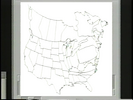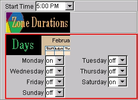










Efficiently entering text on interactive surfaces, such as touch-based tabletops, is an important concern. One novel solution is shape writing - the user strokes through all the letters in the word on a virtual keyboard without lifting his or her finger. While this technique can be used with any keyboard layout, the layout does impact the expected performance. In this paper, I investigate the influence of keyboard layout on expert text-entry performance for stroke-based text entry. Based on empirical data, I create a model of stroking through a series of points based on Fitts's law. I then use that model to evaluate various keyboard layouts for both tapping and stroking input. While the stroke-based technique seems promising by itself (i.e., there is a predicted gain of 17.3% for a Qwerty layout), significant additional gains can be made by using a more-suitable keyboard layout (e.g., the OPTI II layout is predicted to be 29.5% faster than Qwerty).











Spatial layout is frequently used for managing loosely organized information, such as desktop icons and digital ink. To help users organize this type of information efficiently, we propose an interface for manipulating spatial aggregations of objects. The aggregated objects are automatically recognized as a group, and the group structure is visualized as a two-dimensional bubble surface that surrounds the objects. Users can drag, copy, or delete a group by operating on the bubble. Furthermore, to help pick out individual objects in a dense aggregation, the system spreads the objects to avoid overlapping when requested. This paper describes the design of this interface and its implementation. We tested our technique in icon grouping and ink relocation tasks and observed improvements in user performance.



We present three new interaction techniques for aiding users in collecting and organizing Web content. First, we demonstrate an interface for creating associations between websites, which facilitate the automatic retrieval of related content. Second, we present an authoring interface that allows users to quickly merge content from many different websites into a uniform and personalized representation, which we call a card. Finally, we introduce a novel search paradigm that leverages the relationships in a card to direct search queries to extract relevant content from multiple Web sources and fill a new series of cards instead of just returning a list of webpage URLs. Preliminary feedback from users is positive andvalidates our design.